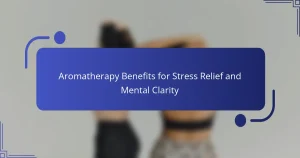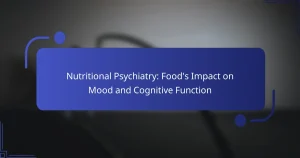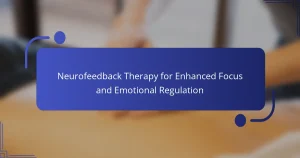Digital detox strategies can significantly improve mental health and wellbeing by reducing stress and enhancing focus. Establishing boundaries for device use and creating tech-free zones are essential steps. Engaging in alternative activities, such as exercising and practicing mindfulness, fosters real-life connections. Understanding cultural approaches and utilizing tools can further support a successful digital detox.

Why is Digital Detox Important for Mental Health and Wellbeing?
Digital detox is crucial for mental health as it reduces stress and enhances overall wellbeing. Constant digital engagement can lead to anxiety and decreased attention span. By taking breaks from screens, individuals can improve their mood and focus. Research indicates that even short digital detox periods can significantly lower stress levels. Embracing digital detox strategies fosters healthier relationships and increases mindfulness, promoting a balanced lifestyle.
What are the Psychological Effects of Excessive Screen Time?
Excessive screen time negatively impacts mental health, leading to anxiety, depression, and reduced attention span. Digital detox strategies can mitigate these effects by promoting mindfulness and enhancing social interactions. Regular breaks from screens improve mood and cognitive function, fostering better mental wellbeing. Engaging in outdoor activities and hobbies can further support mental health by providing a balanced lifestyle.
How Does Digital Overload Impact Daily Life?
Digital overload negatively impacts daily life by increasing stress and reducing focus. Implementing digital detox strategies can significantly enhance mental health and wellbeing.
One effective strategy is setting specific screen time limits. Research shows that limiting daily use to two hours can lead to improved mood and reduced anxiety. Another approach is scheduling tech-free periods, especially during meals and before bedtime, which fosters better relationships and sleep quality.
Engaging in offline activities, such as exercise or reading, can provide a refreshing break from screens. Studies indicate that physical activity boosts endorphins, enhancing overall mental wellness. Mindfulness practices, like meditation, can also help manage the stress caused by constant digital engagement.
Incorporating these strategies into daily routines can create a healthier balance, promoting a more fulfilling life.
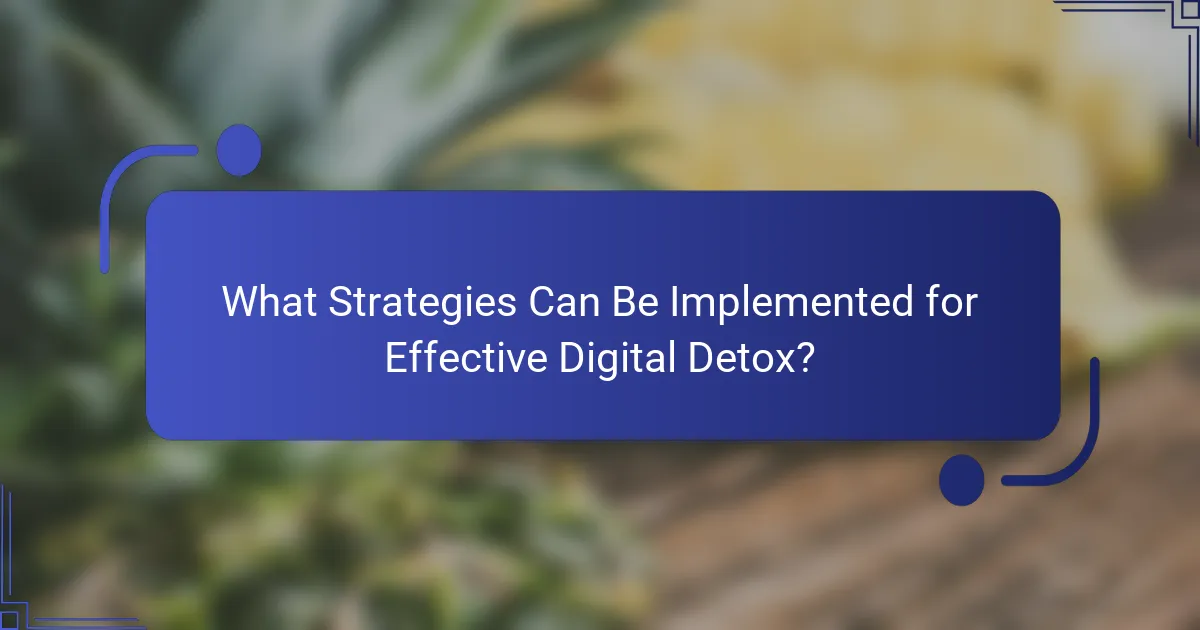
What Strategies Can Be Implemented for Effective Digital Detox?
To implement effective digital detox strategies, prioritize setting specific boundaries for device use. Establish tech-free zones, such as bedrooms or dining areas, to foster healthier habits. Schedule regular breaks from screens, aiming for at least one full day each week without digital devices. Engage in alternative activities like reading, exercising, or spending time in nature to enhance mental health. Additionally, consider mindfulness practices to improve awareness of digital consumption patterns.
Which Techniques Help Reduce Screen Time?
To reduce screen time, implement techniques that promote mindfulness and structured routines. Setting specific time limits for device usage can create a balanced approach.
1. Schedule breaks away from screens throughout the day.
2. Engage in outdoor activities to replace screen time.
3. Use apps that track and limit usage.
4. Establish tech-free zones in your home.
5. Prioritize face-to-face interactions over digital communication.
6. Practice digital detox weekends to reset habits.
These strategies enhance mental health by fostering real-world connections and reducing digital fatigue.
How Can Mindfulness Practices Enhance Digital Detox?
Mindfulness practices significantly enhance digital detox by promoting present-moment awareness and reducing anxiety. Engaging in mindfulness techniques, such as meditation or deep breathing, helps individuals disconnect from digital distractions. This disconnection fosters mental clarity and emotional resilience, leading to improved mental health. Research shows that mindfulness can decrease stress levels by up to 30%, making it a powerful tool during digital detox periods. By incorporating mindfulness, individuals can better manage their digital consumption and cultivate a healthier relationship with technology.
What Role Does Social Support Play in Digital Detox?
Social support significantly enhances the effectiveness of digital detox efforts. It provides motivation and accountability, making it easier to reduce screen time. Engaging with friends or family during a detox can lead to shared experiences and emotional encouragement. Studies show that social connections improve mental health, which is crucial during a detox period. Having supportive individuals around can help individuals cope with withdrawal symptoms and maintain commitment to their detox goals.
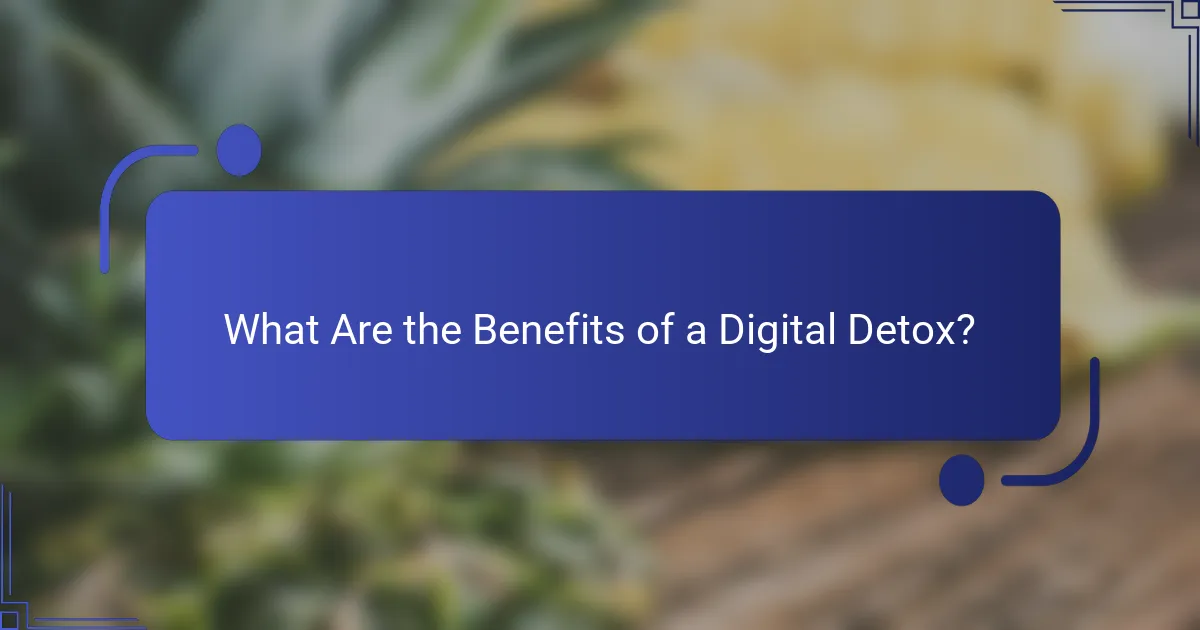
What Are the Benefits of a Digital Detox?
A digital detox enhances mental health by reducing stress, improving focus, and fostering real-life connections. It allows individuals to disconnect from technology, leading to better emotional balance and increased productivity. Studies show that limiting screen time can decrease anxiety and improve sleep quality. Engaging in offline activities promotes mindfulness and strengthens relationships, contributing to overall wellbeing.
How Does Digital Detox Improve Focus and Productivity?
Digital detox significantly enhances focus and productivity by reducing distractions and mental clutter. This practice allows individuals to reconnect with their tasks, leading to improved concentration and efficiency. Research indicates that taking regular breaks from digital devices can boost cognitive function and creativity. For instance, a study found that individuals who engage in digital detox report a 30% increase in productivity after a week of limited screen time. Additionally, reduced screen time can lead to better sleep quality, further enhancing focus during waking hours.
What Positive Changes Can Be Expected in Relationships?
Digital detox strategies can lead to significant positive changes in relationships. Reduced screen time fosters deeper connections, enhances communication, and improves emotional availability.
Engaging in face-to-face interactions promotes empathy and understanding, strengthening bonds. Couples report increased quality time and shared experiences, which enhance relationship satisfaction.
As a result, digital detox can reduce misunderstandings and conflicts stemming from miscommunication. Overall, prioritizing real-life interactions cultivates healthier, more fulfilling relationships.
Which Health Improvements are Associated with Reduced Screen Time?
Reduced screen time is linked to various health improvements, including enhanced mental clarity and better emotional regulation. Digital detox strategies can lead to decreased anxiety and improved sleep quality. Studies indicate that limiting screen exposure may enhance focus and productivity. Additionally, reduced screen time fosters stronger interpersonal relationships by encouraging face-to-face interactions.
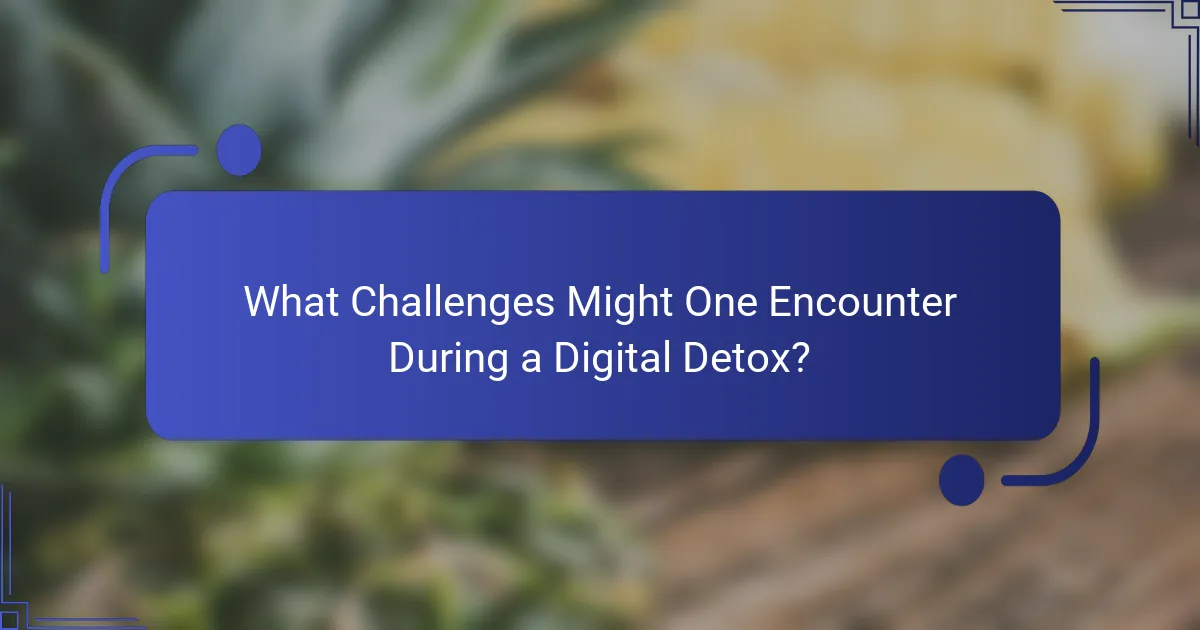
What Challenges Might One Encounter During a Digital Detox?
During a digital detox, individuals may face several challenges that impact their mental health and wellbeing. Common obstacles include withdrawal symptoms, feelings of isolation, difficulty focusing on non-digital activities, and pressure from social expectations.
Withdrawal symptoms can manifest as anxiety or irritability when disconnecting from devices. Feelings of isolation may arise as individuals miss social interactions facilitated by technology. Difficulty focusing on activities without screens can hinder engagement in hobbies or social gatherings. Lastly, societal pressure to remain connected can create stress, making it hard to commit to a detox.
Addressing these challenges involves setting clear goals, seeking support from peers, and finding alternative activities to engage in during the detox period.
How Can Withdrawal Symptoms Be Managed?
Withdrawal symptoms can be effectively managed through various digital detox strategies. First, set specific timeframes for device usage to create boundaries. Gradually reduce screen time to ease the transition. Engage in alternative activities such as reading, exercising, or spending time outdoors to fill the void left by reduced digital engagement. Establish support systems by sharing goals with friends or family, which can provide accountability and encouragement. Lastly, practice mindfulness techniques to enhance self-awareness and cope with cravings, leading to improved mental health and wellbeing.
What Strategies Can Help Overcome Resistance to Change?
To overcome resistance to change, implement digital detox strategies that promote mental health. Start by setting specific times to disconnect from devices, fostering mindfulness through activities like meditation or nature walks. Encourage gradual reduction of screen time to ease into the change. Create supportive environments that prioritize face-to-face interactions, enhancing social connections. Lastly, educate on the benefits of digital detox, such as improved focus and reduced anxiety, to reinforce motivation.
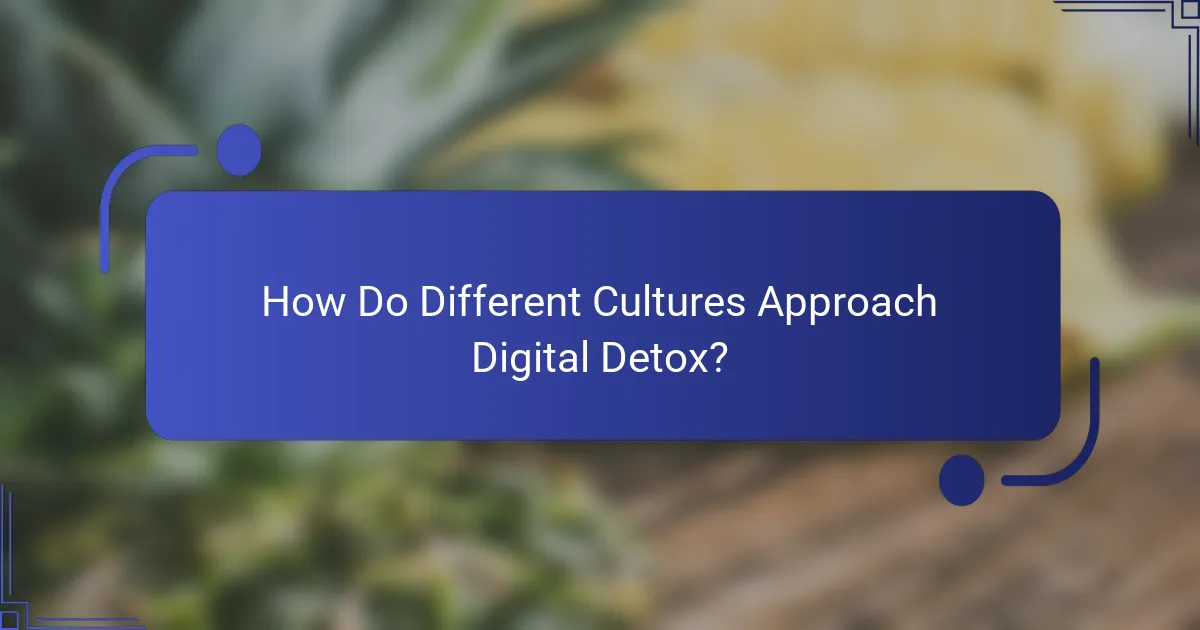
How Do Different Cultures Approach Digital Detox?
Different cultures approach digital detox through unique strategies that reflect their values and lifestyles. For instance, Scandinavian countries emphasize nature immersion, encouraging outdoor activities to disconnect from technology. In Japan, mindfulness practices like Zen meditation promote digital breaks, fostering mental clarity. Meanwhile, in the U.S., social media sabbaticals are common, focusing on reducing online engagement for mental health benefits. These diverse methods highlight the global recognition of the importance of stepping back from digital devices to enhance wellbeing.
What Unique Practices are Found in Various Regions?
Various regions employ unique digital detox strategies that enhance mental health and wellbeing. For instance, Scandinavian countries promote “friluftsliv,” encouraging outdoor activities to disconnect from technology. In Japan, “shinrin-yoku,” or forest bathing, emphasizes immersion in nature for stress relief. In the United States, tech-free retreats focus on mindfulness and meditation. Each approach highlights the importance of nature and intentional disconnection, fostering mental clarity and emotional balance.
How Do Cultural Attitudes Influence Digital Consumption?
Cultural attitudes significantly shape digital consumption by influencing preferences and behaviors. For instance, cultures that prioritize well-being encourage digital detox strategies, fostering improved mental health. This shift is evident in the growing trend of mindfulness and balance in technology use. Research indicates that societies valuing community and connection may adopt digital detox practices more readily, enhancing overall well-being.
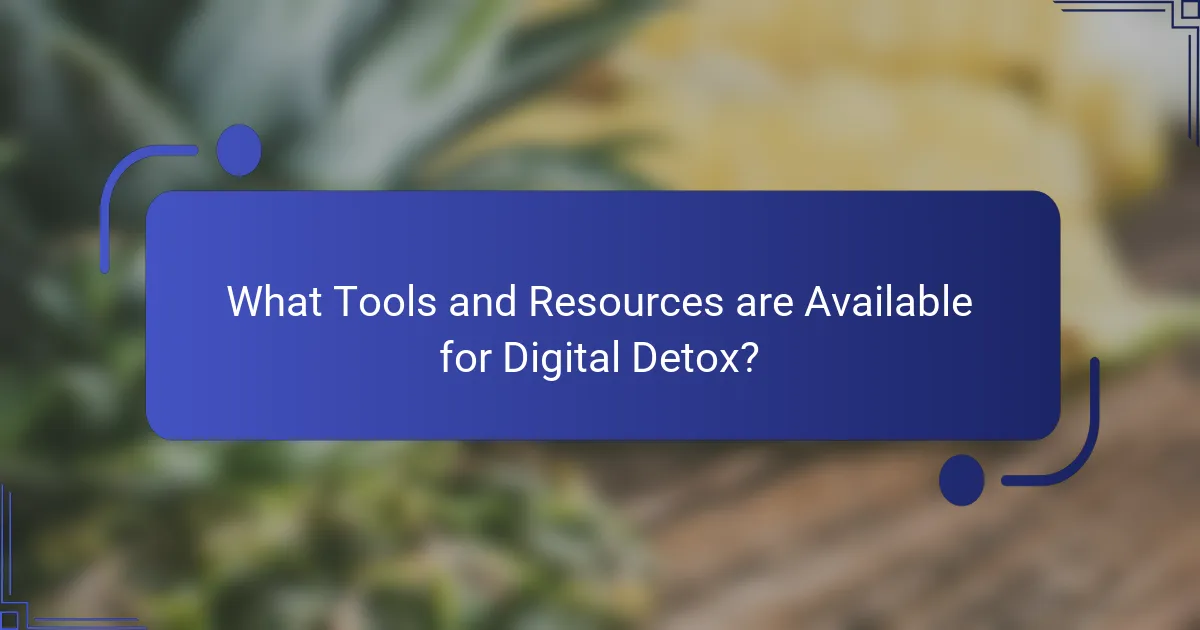
What Tools and Resources are Available for Digital Detox?
Numerous tools and resources facilitate digital detox for enhanced mental health and wellbeing. Apps like Forest and Stay Focused help limit screen time. Books such as “Digital Minimalism” provide strategies for mindful technology use. Workshops and retreats offer immersive experiences for disconnection. Online communities support accountability and share tips.
Which Apps Facilitate Digital Detox Efforts?
Several apps support digital detox efforts by promoting mindfulness and reducing screen time. Popular options include Forest, which encourages focus by growing virtual trees, and Moment, which tracks device usage. Other noteworthy apps are Flipd, which locks your phone for set periods, and Offtime, allowing users to customize notifications and app access. These tools help improve mental health and wellbeing by fostering healthier digital habits.
What Online Communities Support Digital Detox Initiatives?
Online communities that support digital detox initiatives include forums and groups focused on mental health and wellness. Examples are the Digital Detox Facebook Group, r/digitaldetox on Reddit, and the Screen Time Support Group on Meetup. These platforms encourage sharing experiences and strategies for reducing screen time, fostering a supportive environment for participants. Engaging in these communities enhances accountability and motivation, which are crucial for successful digital detox efforts.
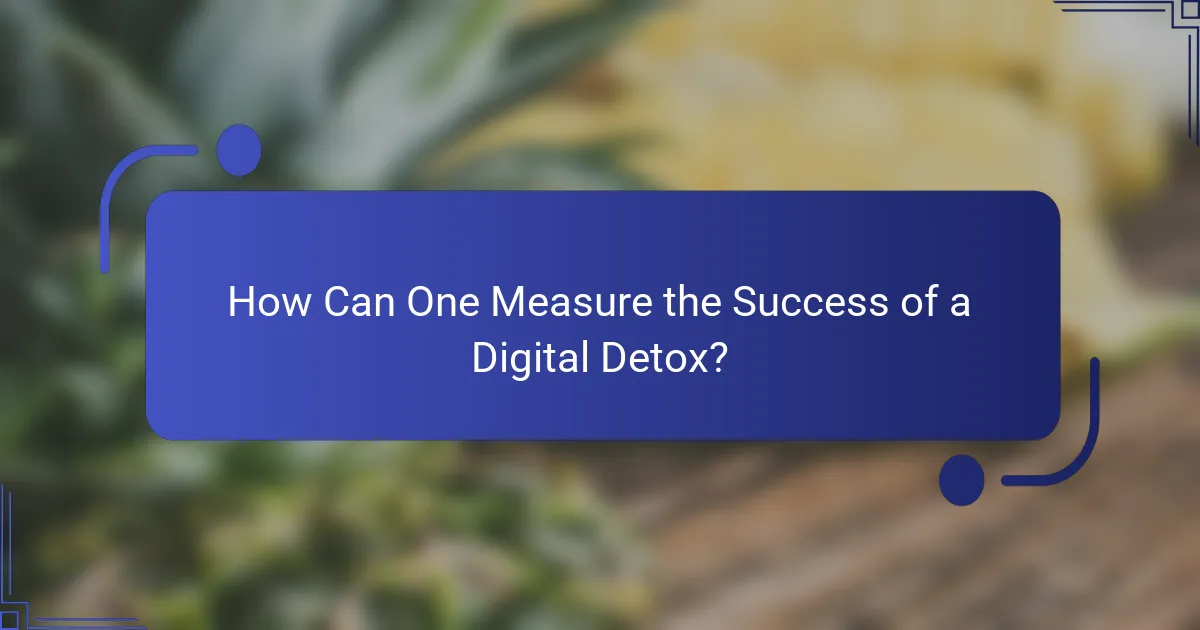
How Can One Measure the Success of a Digital Detox?
To measure the success of a digital detox, track improvements in mental clarity, emotional stability, and overall wellbeing. Key indicators include reduced anxiety levels, enhanced focus, and better sleep quality. Regular self-reflection, journaling experiences, and monitoring social interactions can provide valuable insights into personal progress. Consider setting specific goals for device usage and evaluate adherence to these targets over time.
What Metrics Indicate Improvement in Mental Health?
Metrics indicating improvement in mental health include reduced anxiety levels, increased emotional resilience, and enhanced focus. Digital detox strategies can lead to measurable changes in these areas.
1. Reduced Anxiety Levels | Measured through self-reported surveys or clinical assessments.
2. Increased Emotional Resilience | Evaluated using psychological resilience scales.
3. Enhanced Focus | Assessed via attention span tests or productivity tracking.
4. Improved Sleep Quality | Monitored through sleep tracking devices or logs.
5. Greater Social Interaction | Tracked by frequency of social activities or engagements.
6. Increased Mindfulness | Measured through mindfulness assessment tools or self-reflection journals.
How Can Personal Reflections Aid in Assessing Progress?
Personal reflections significantly enhance the assessment of progress during a digital detox. They provide clarity on emotional responses and behavioral changes. Regular journaling or mindfulness practices can reveal insights into stress levels and mental clarity. This self-awareness enables individuals to adjust their strategies effectively, promoting sustained mental health benefits.
What Common Mistakes Should Be Avoided During a Digital Detox?
To maximize the benefits of a digital detox, avoid common mistakes such as setting unrealistic expectations, neglecting planning, and failing to communicate your intentions. Many people expect immediate results, leading to disappointment. Planning is essential for identifying triggers and establishing boundaries. Additionally, informing friends and family about your detox can prevent misunderstandings and support your commitment.
What Best Practices Ensure a Successful Digital Detox Journey?
Establishing boundaries and intentional habits ensures a successful digital detox journey. Start by setting specific time limits for device usage to create a structured approach.
Next, designate tech-free zones or times in your daily routine, such as during meals or before bedtime. This fosters mindfulness and promotes better mental health.
Engage in alternative activities like reading, exercising, or spending time outdoors to fill the time previously spent on devices. This enhances overall wellbeing and reduces reliance on technology.
Lastly, reflect on your experiences regularly to assess progress and make necessary adjustments. This self-awareness reinforces the benefits of your digital detox and supports long-term success.
